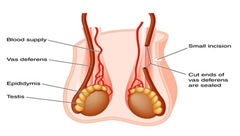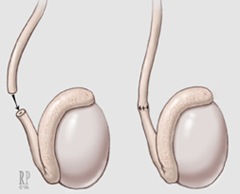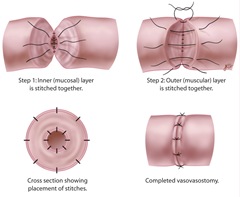Understanding the Procedure: The Science Behind Vasectomy Reversal
Vasectomy reversal is a surgical procedure designed to restore fertility in men who have previously undergone a vasectomy. This blog will delve into the science behind vasectomy reversal, explaining how it works and what patients can expect throughout the process.

How Vasectomy Reversal Works
A vasectomy reversal involves reconnecting the vas deferens, the tubes that were cut or sealed during a vasectomy. The vas deferens carry sperm from the testicles to the urethra, where it mixes with seminal fluid to form semen. By reconnecting these tubes, sperm can once again be present in the ejaculate, allowing for the possibility of natural conception.
Vasovasostomy
The most common technique for vasectomy reversal is vasovasostomy. This procedure involves microsurgically suturing the two ends of the vas deferens back together. A high-powered microscope and very fine sutures are used to ensure precision and minimize tissue damage. This method is typically chosen when there is no blockage in the vas deferens and the fluid from the testicular end contains sperm.
Vasoepididymostomy
In cases where there is a blockage in the vas deferens or when the fluid from the testicular end does not contain sperm, a more complex procedure called vasoepididymostomy may be required. This technique involves connecting the vas deferens directly to the epididymis, the structure where sperm matures and is stored. Vasoepididymostomy is a more intricate procedure but can be highly effective in bypassing obstructions.
What to Expect Before, During, and After the Procedure
Pre-Operative Consultation
Before undergoing a vasectomy reversal, a thorough consultation with a urologist is essential. This appointment will involve discussing your medical history, previous vasectomy details, and any fertility concerns. The urologist will likely perform a physical examination and may order tests to assess your overall health and fertility status.
The Day of the Surgery
On the day of the surgery, patients can expect the following steps:
- Anesthesia: Vasectomy reversal is usually performed under general anesthesia, although local anesthesia with sedation may also be an option.
- Surgical Procedure: The surgery typically takes between 2 to 4 hours, depending on the complexity of the procedure. The surgeon will make a small incision in the scrotum to access the vas deferens and perform either a vasovasostomy or vasoepididymostomy.
- Recovery Room: After the surgery, patients will spend some time in a recovery room to ensure they are stable and comfortable before being discharged.
Post-Operative Care and Recovery
Recovery from vasectomy reversal involves several important steps:
- Rest and Activity: Patients are advised to rest and avoid strenuous activities for a few weeks following the surgery. Most can return to light activities and work within a week, but heavy lifting and vigorous exercise should be avoided.
- Pain Management: Mild to moderate pain and swelling are common after the procedure. Over-the-counter pain relievers and ice packs can help manage discomfort.
- Follow-Up Appointments: Regular follow-up appointments with the urologist are crucial to monitor healing and evaluate the success of the procedure. A semen analysis is usually performed a few months after surgery to check for the presence of sperm.
Success Rates and Factors Influencing Outcomes
The success of vasectomy reversal is influenced by several factors, including the time elapsed since the vasectomy, the patient’s age and overall health, and the surgical technique used. Generally, the sooner the reversal is performed after the vasectomy, the higher the chances of success. Success rates can range from 40% to over 90%, depending on these factors.
Conclusion: Restoring Fertility Through Vasectomy Reversal
Vasectomy reversal is a complex yet effective procedure that can restore fertility and offer the possibility of natural conception. Understanding the science behind the procedure and what to expect can help patients make informed decisions and prepare for their journey.
If you’re considering vasectomy reversal and wish to learn more about the procedure, contact:
Yaniv Larish, MD
4 East 76th Street
New York, NY 10021
Phone: (646) 862-5500
Dr. Yaniv Larish provides expert guidance and comprehensive care for individuals seeking to restore their fertility through vasectomy reversal. Schedule a consultation to explore your options and take the first step towards achieving your family planning goals.



